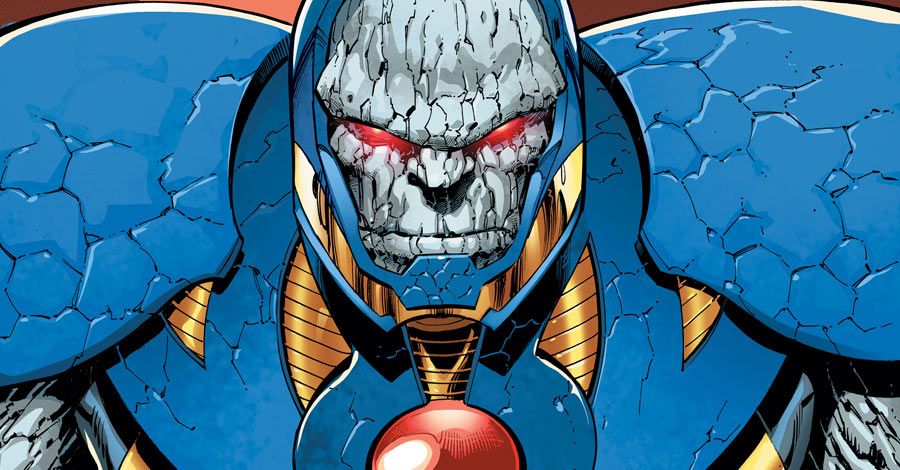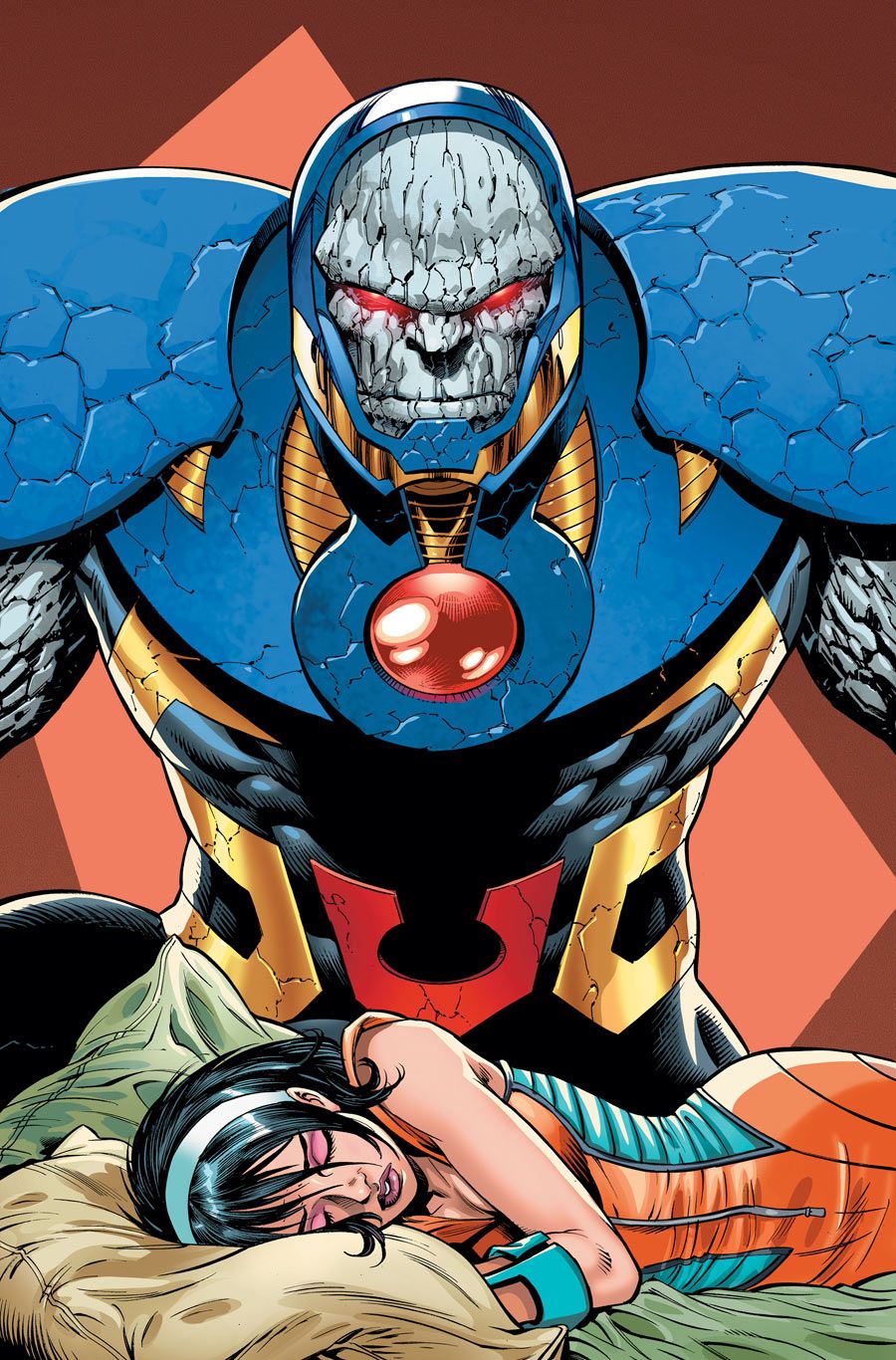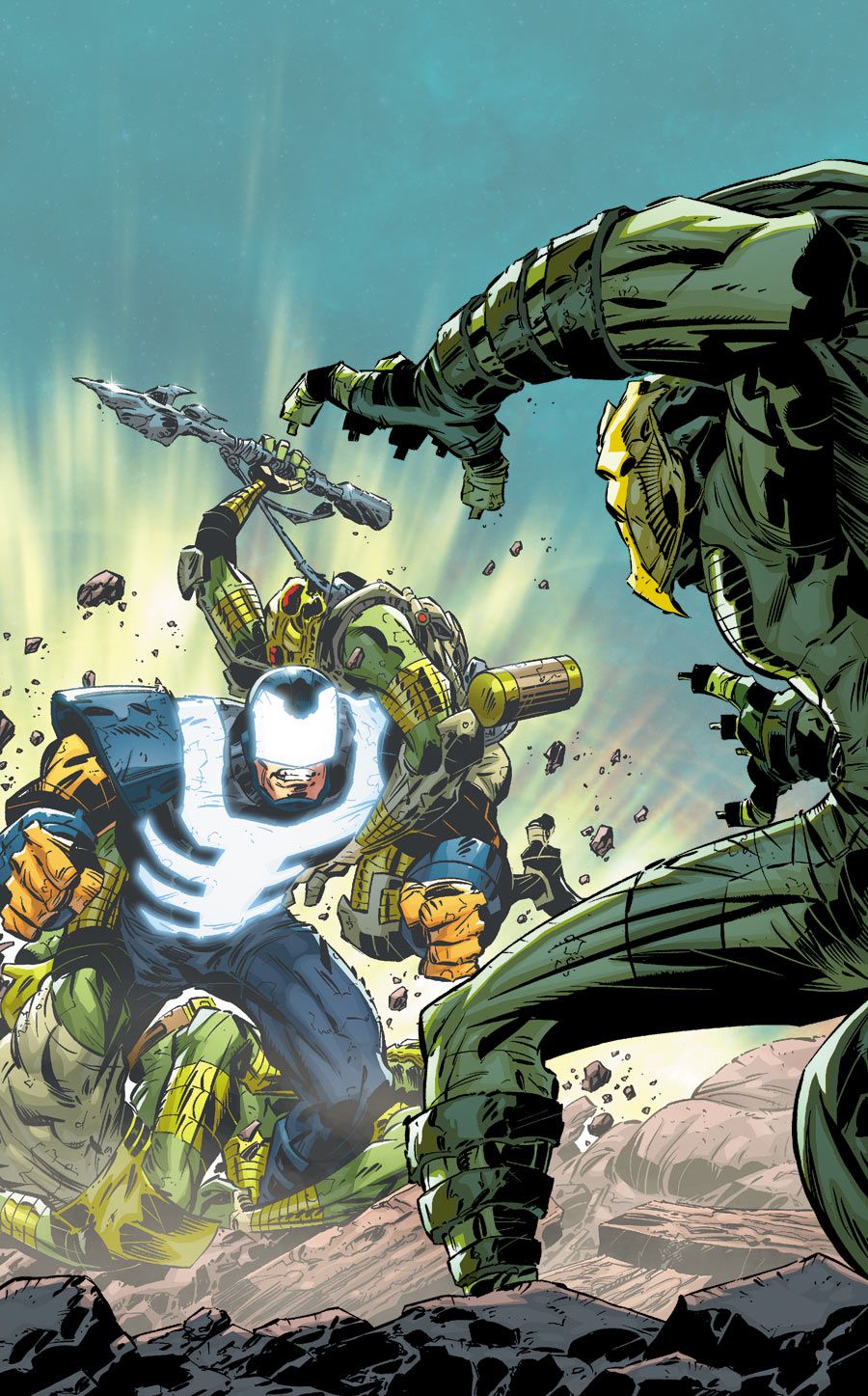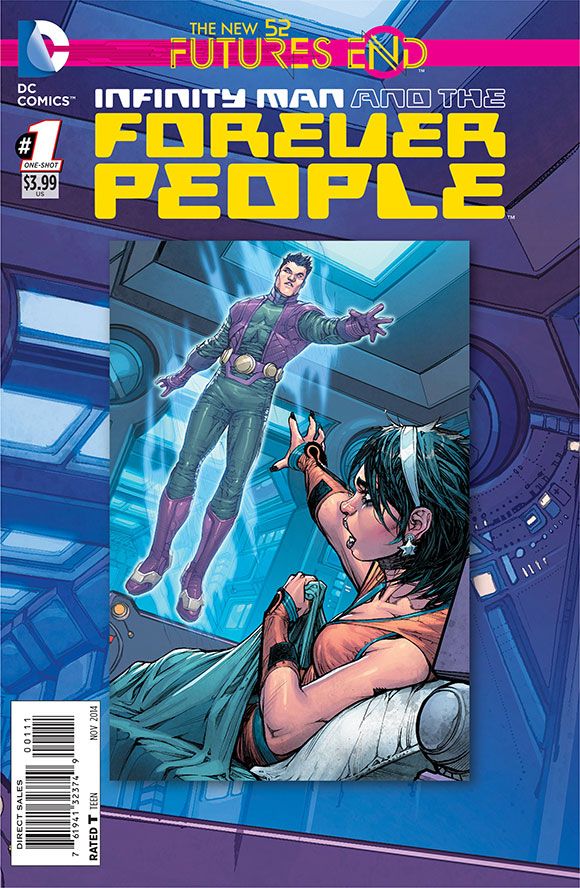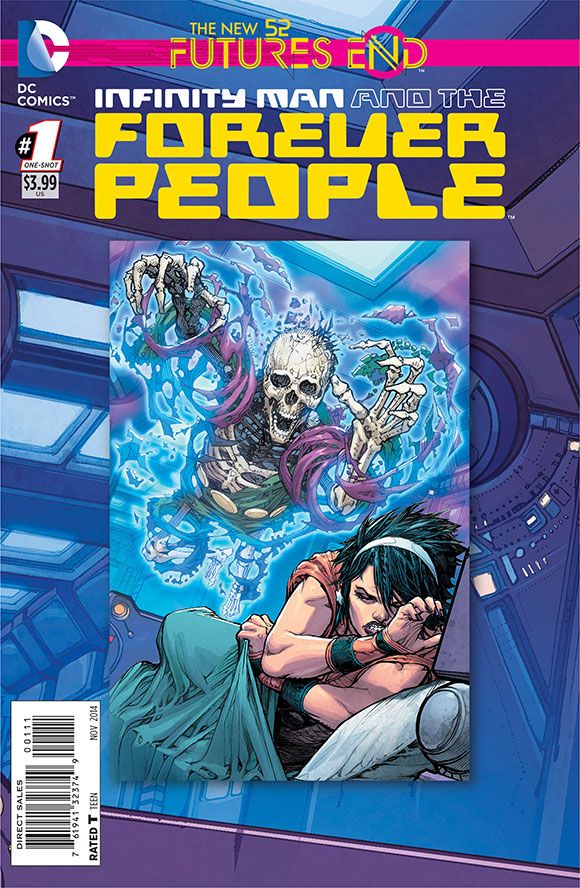DC Comics co-publisher Dan DiDio's latest comic book writing endeavor, "Infinity Man and the Forever People," launched this week; co-written by Keith Giffen, who illustrates with inker Scott Koblish. The ongoing series is a reimagining of one of comic book legend Jack Kirby's Fourth World creations, "Forever People."
In DiDio and Giffen's take, four students -- Vykin, Serafina, Beautiful Dreamer and Mark Moonrider, each of which were a part of the original "Forever People," albeit some have undergone notable alterations -- leave New Genesis and end up on Earth, specifically Venice Beach. Though the book has a lighthearted tone thus far, it's not exactly spring break, especially with Mantis -- another Kirby creation, one of the major villains from Apokolips -- not far behind.
DiDio Aims for "Fun and Energy" with "Infinity Man and the Forever People"
CBR News spoke with DiDio about "Infinity Man" #1, the ways he'd like to see the book resemble the "Harry Potter" franchise, the upcoming guest artist stints from industry vets Tom Grummett and Jim Starlin and the book's September issue, part of DC's "Futures End" event month.
CBR News: Dan, what kind of challenge was it for you and Keith to put this first issue together? Not only are you reintroducing a concept that a lot of people may not be familiar with, but there are a lot of characters in this first issue. What was it like to balance all of that?
Dan DiDio: I used to work with ensemble casts a lot of the time when I was writing in animation; I always like working with ensemble casts. But you're moving at a different pace when you're working in comics, and you have to make sure that all the characters have a moment to really get a chance to breathe a little bit, and exert some level of their personality and direction, so people can relate to them. You don't want to play them strictly as stereotypes; coming out of the gate, you want to give them a level of interest so that people will want to read more with them.
"O.M.A.C." was a pure, crunching, action book. That was always the plan. This is much more about the team dynamics, and four kids learning about each other as they're learning about the planet they're on. The stories, as they develop, are about the mistakes they make along the way, how they learn from what they're doing, and how they're trying to make a difference.
It's a younger cast, as you noted, and the interpersonal dynamics appear to be as important as the big cosmic happenings -- is that a big part of the appeal for you in writing the book?
Absolutely. It's the personal interactions that I think matter the most, especially when you're doing something of a periodic nature. You can have a story that has a beginning, middle and end, but then you have to start another one, and the one consistency that you have all the way through are the characters who are in your book. How do you have them learn and grow, but not change too much so that they're not recognizable from issue to issue?
Something else that's definitely noticeable from reading #1 -- there definitely is somewhat of a lighthearted tone. Not completely, but it's a book that seem to be not taking itself completely seriously. How important is that aspect going forward?
I always say, you have to have lighthearted moments in order to give the heavier scenes more merit and weight. If you're going to have a lot of drama, then you need lightness in order to balance it out again. That's one of the things that I think is essential in any of the stories we tell.
We're starting very lighthearted on this. You'll get the sense that things get more dire, but you'll also get the sense of camaraderie and true kinship that this team starts to develop. The goal is to keep it lighter when they're at odds with each other, and then, as things get tougher, you can see them forging as a unit, depending on each other more and more, and seeing the value of that.
If you look at the "Harry Potter" movies and things like that, you see how the relationships change from film to film. Even though the films got darker, the heart, the sense of camaraderie and true love between the characters, becomes even more prevalent. If we can capture a fraction of that in this book, then I consider it a huge win.
Looking at DC as a whole, there has been criticism out there that the current books tend to be darker and more serious. Given everything you've just said about this series, is it a conscious choice to mix it up, and add diversity in tone?
Well, the funniest thing about it, and this is going to sound like the strangest thing you'll hear in the course of any interview, I gravitate to the lighter stuff, naturally. That's what I feel most comfortable doing, that's the storytelling that I felt best with, that's the type of character voices I love to bring to the mix. That's what I enjoy. So when I work on a book like this, it's something that I can relate to. I'm not trying to play against grain. Even when I did "Phantom Stranger," it was a dark-toned book, but there was a lot of interpersonal character humor when I first started with it.
Right at the end of the first issue, readers see the introduction of Mantis, a character who people might be peripherally familiar with, but hasn't been seen in a long time. What do you like about Mantis, and what made him the right choice for this book's first villain?
It's interesting, because there's going to be a little different origin to who Mantis is, and you'll find that out in the second issue when you find out what the true origin of Mantis and the Foragers are. It has to do, ultimately, with what happens when you introduce this godlike entity on Earth, and they try to affect change in ways they understand it, and how they wind up making things worse in the process. Because the level they're working on, they feel above, and ultimately they're making decisions that wind up affecting people even in ways they never dreamed possible. Mantis is at the heart of that.
Why did we pick Mantis? When it comes to working on any Kirby material, there are so many incredibly visual characters. Honestly, I just absolutely love the design of that character. The level of strength and power that character presents feels perfect for the story.
Presumably you've got a lot of Kirby-created characters to choose from for this series.
I can't tell you how much fun we have with it. When you think of New Gods, and you think of New Genesis, or even Apokolips -- these are worlds we're talking about. But how few characters we've actually met from those worlds, and the idea of adding new characters and new members of the New Gods -- we can really fill out the New Gods' world. I think that just helps enrich such a great base that we're working from.
Based on the first issue and the upcoming solicitations, the book seems to be at first doing its own thing, being established on its own, but the DC Universe as a whole right now seems to be getting a little more integrated than it was at the start of the New 52. Is the plan to mix things up fairly quickly with this book? See some other DC heroes in it, or maybe see these characters elsewhere?
One of the things that was told to me as the writer was, "You have to include elements of the Bat-family into the book, because that will help draw attention to the series." So I'm very happy to say by the time we get to the fourth issue, we've included Bat-Cow, which I feel will really galvanize the Bat-audience into testing this book.
But the book is tying into September's "Futures End" event.
The interesting to me about "Futures End" is that the purpose behind the stories is to really give an epilogue or long-term look to where the series is going -- where is "Infinity Man and the Forever People" going? The way that we approached that particular issue, it doesn't really tie-in to "Futures End" per se, but it really plays into the future of "Infinity Man and the Forever People." We seed something that's down the road for the characters, and the story arc that you'll see taking place between October to March has elements of what lead you to that story. You're almost seeing the prologue in October to March, and you'll see the epilogue in September.
The news came out this week that Tom Grummett and Jim Starlin will be illustrating issues #2 and #3 respectively, issues Keith Giffen was originally solicited for. What prompted that switch? And what has you excited about working with both of those artists?
Keith is fully extended on so many things going on, and "Futures End" [is] really taking up so much of his time. I heard from the co-publisher directly that his priority is "Futures End," naturally, because of just the schedule that they're on over there. We had thought we would be able to work on the first couple of issues, and we brought Jim in to do the third one, knowing that Keith would be able to take a couple of months, regroup, and then be able to go from #4 on with a consistent run.
Unfortunately, because of personal things, Keith was unable to do #2, so we had to switch up the plan a little bit. Tom stepped in. Honestly, what we looked for was artists that you felt the influence of Kirby on their work and style and their storytelling. There's a splash page that Tom Grummet does with Darkseid and Beautiful Dreamer, that I think makes you feel that the book's in good hands with that issue. I absolutely adore working with Keith, but it's fun to work with Tom, because I've enjoyed his work over the years.
We knew in advance we'd be working with Jim. We were able to actually to craft a story directly for Jim Starlin, and play upon some of the things that he really does so extraordinary well. That's why we went for a very ethereal, heady type of story where, basically, Beautiful Dreamer is having a conversation with the personification of the Anti-Life Equation; which plays on so many different planes. That makes it a lot of fun.
But the best part is that Keith come roaring back with #4. He's there to stay at that point. We're on the phone every day, talking story. We're constantly talking the whole thing through, and the bits and pieces and turns. Bat-Cow was actually Keith's idea, not mine, I have to admit that. But boy, did I have fun putting that in the book. [Laughs]
One non-"Infinity Man" question for you -- recently, a new version of Wally West has appeared in "The Flash," that character's New 52 debut. From your stance as co-publisher, what makes that take on the character the right one?
Everything that we're doing, from "Forever People" on, are things really to move the story, the characters forward, to bring the DCU into a sensibility that fits today's audience, and to give everything a contemporary feel. So whatever we can do to broaden the appeal of the DCU, we will constantly do.

